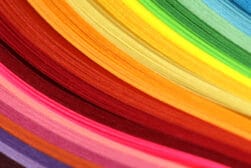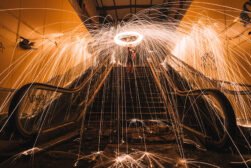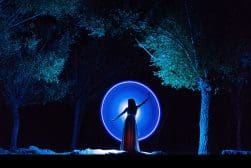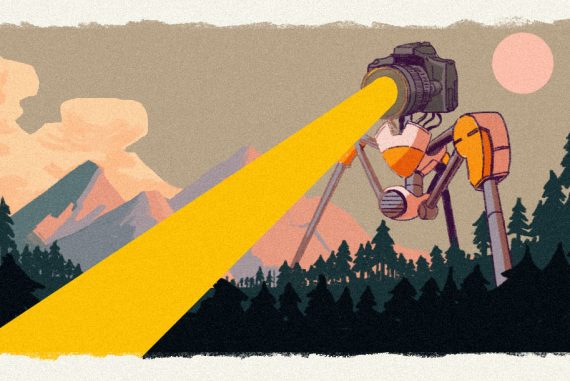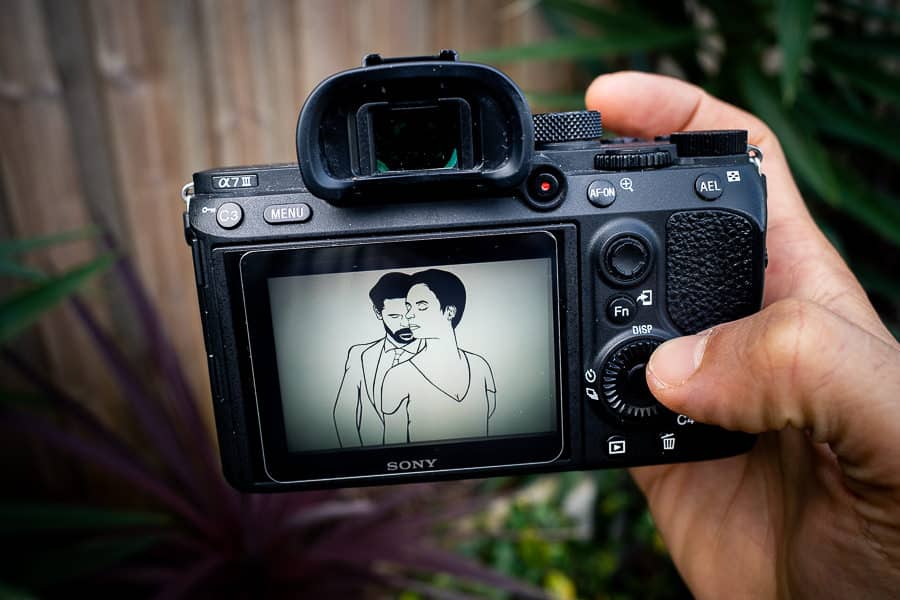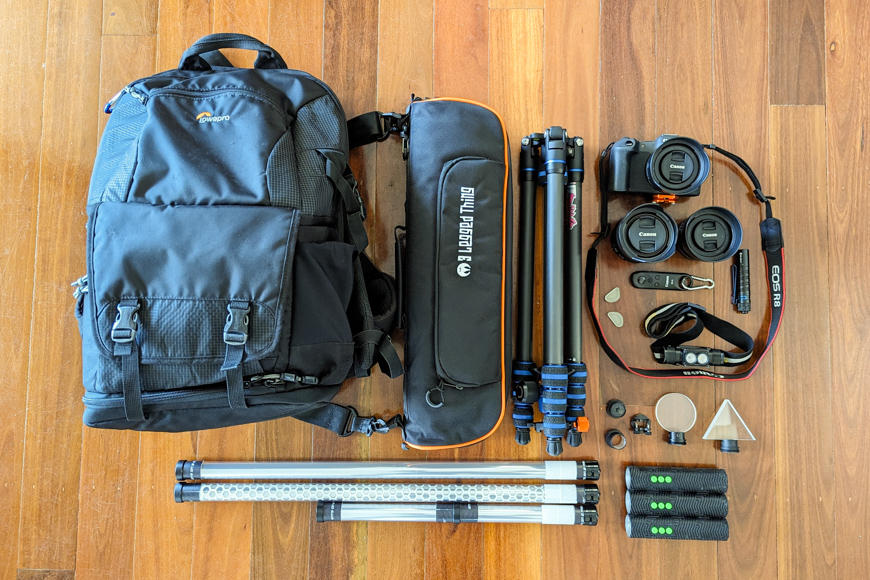
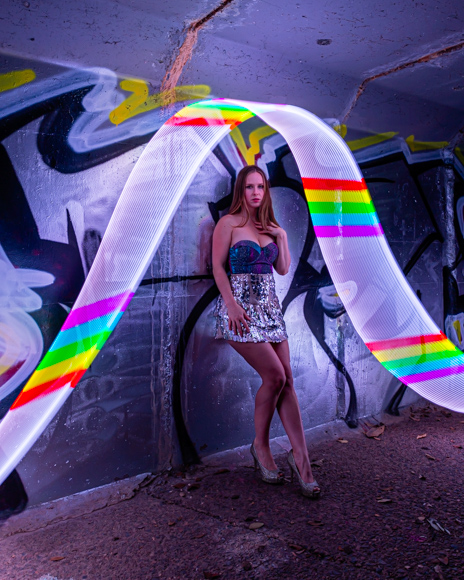
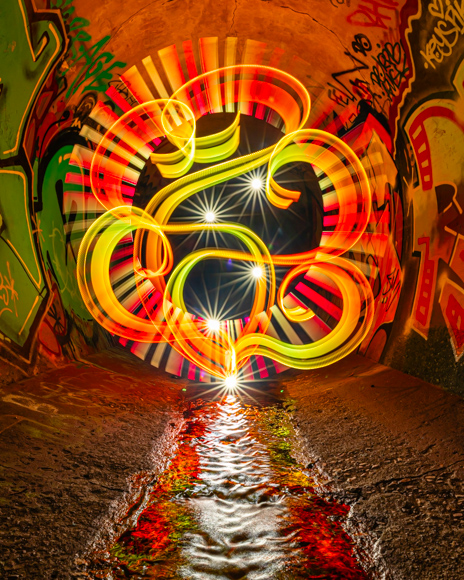
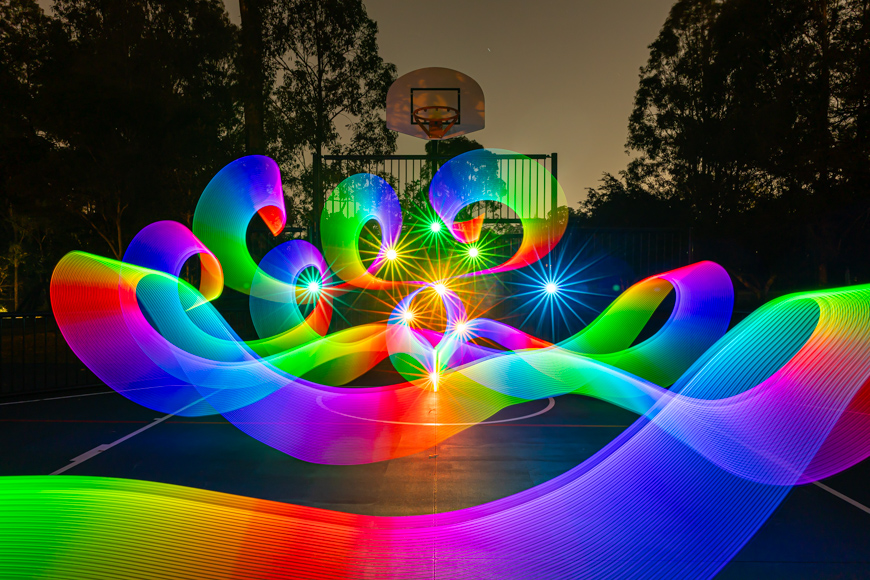
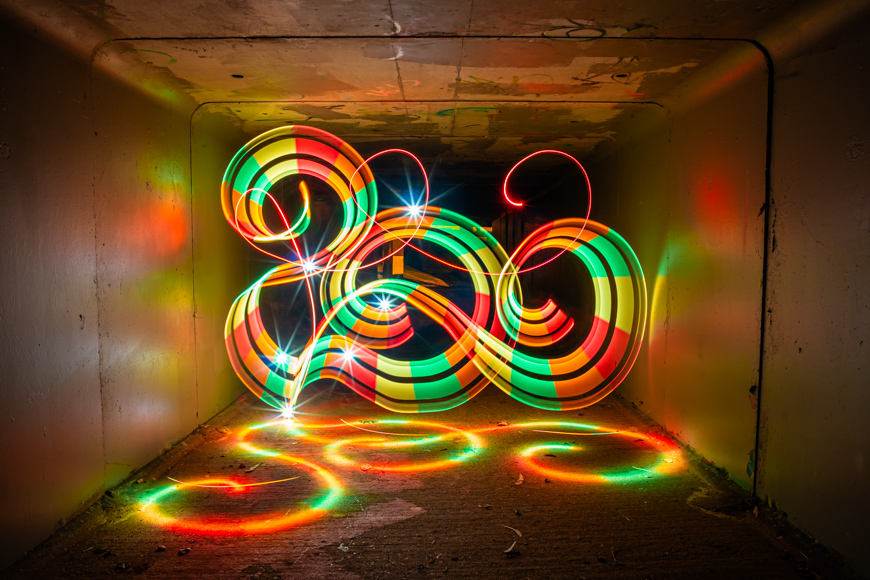
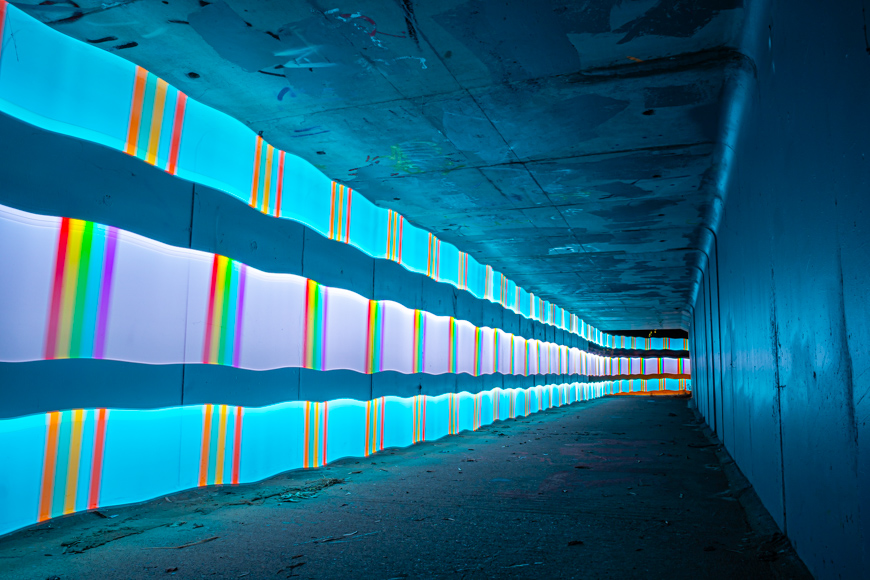
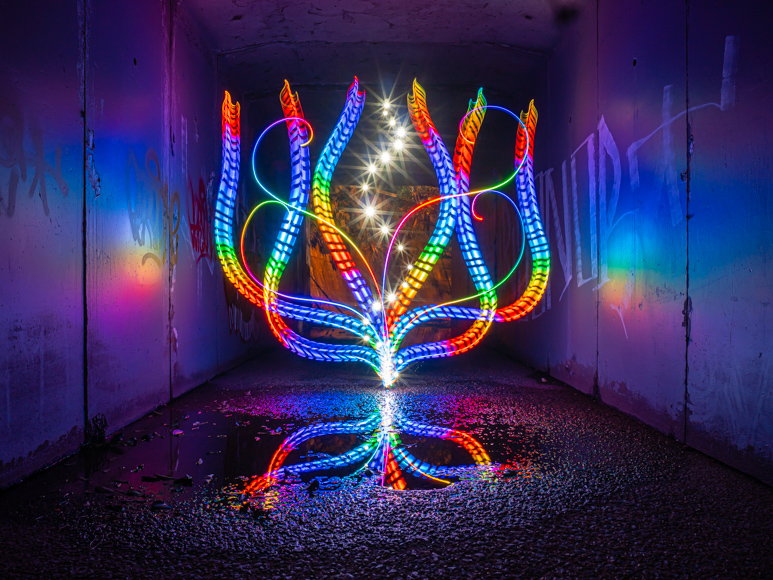
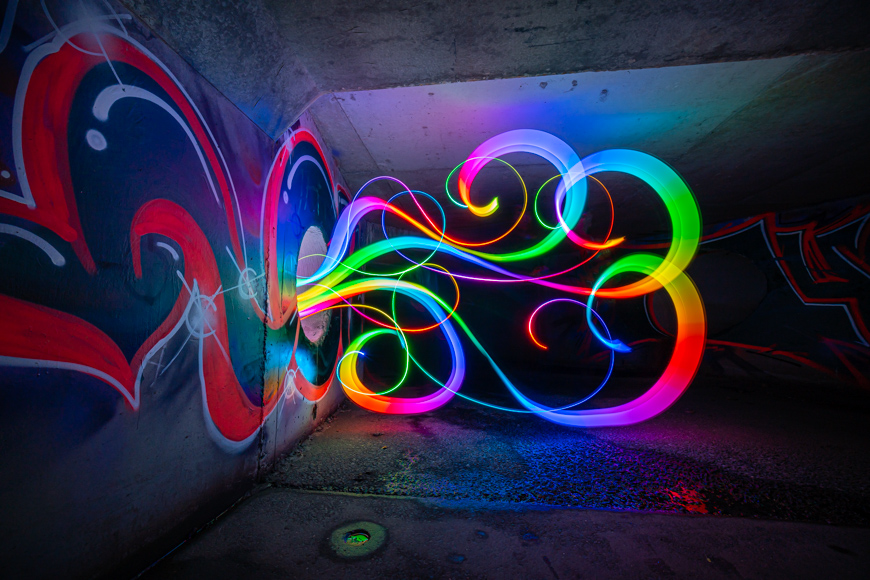
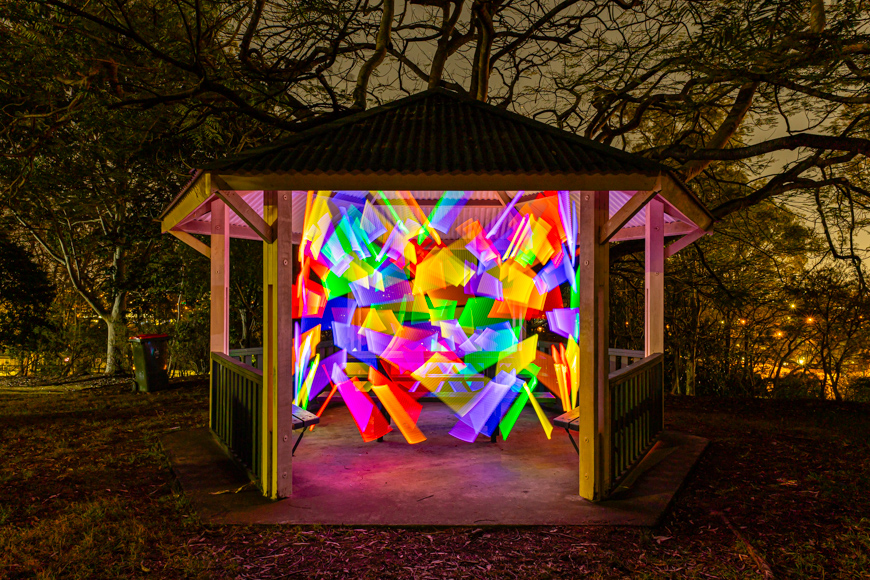
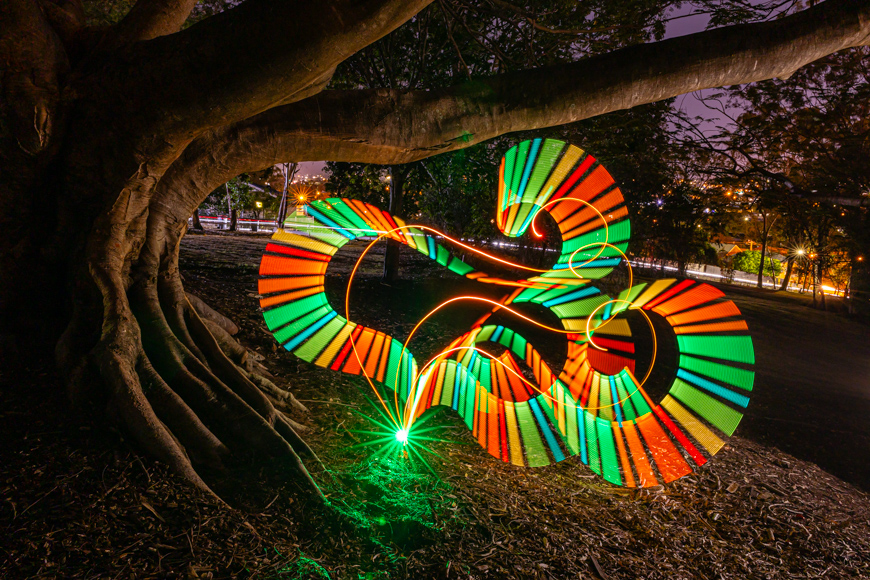
Stephen Knight
Fine Art | Last Updated: October 13, 2023
My name is Stephen Knight, and I am a light painting photographer based in Brisbane, Australia.
I became interested in light painting in 2014, and my techniques have evolved during the last decade to include art nouveau-inspired light plants, light painting portraits, freestyle light trails, and illumination of interesting locations.
I regularly review flashlights and torches suitable for light painting and night photography on my website, which appears to be quite a niche.
Lightweight camera equipment is important to me as I’ve had a bad back ever since I was a teenager. This influenced my decision to move to Canon’s RF system.
My primary camera is the Canon EOS R8. It is lightweight, easy to use, and has excellent image quality and accurate autofocus.
As I tend to use the camera for long exposures on tripods, or portraits with faster shutter speeds, I don’t miss the lack of IBIS. I use the Canon BR-E1 Bluetooth wireless remote for starting and ending long exposures in manual or bulb modes
To help keep the weight of my kit down, I chose three compact and lightweight Canon RF primes. These are the Canon RF 16mm f/2.8, Canon RF 24mm f/1.8, and the Canon RF 50mm f/1.8.
I tend to use the 16mm for photographing cityscapes and urbex photography, the 24mm for the majority of my light painting photography, and the 50mm for portraits.
Lighting equipment is critical for light painting photography, which involves the creation of light trails during a long exposure photo.
My current light painting flashlights and tools of choice are from Ants On A Melon (AOAM). This company introduced the RGB Critter (now upgraded to the RGB Critter 2.0) in 2022, which is by far the best RGB colour-changing flashlight created for light painters and flow artists.
They have spent considerable time in research and development to create a very extensive range of light painting tools that connect to the Critter.
The light painting tools in my kit photo above are typical examples of tools that I use to create an art nouveau light plant.
The kit photo includes:
Three RGB Critter 2.0 Flashlights, two 8″ Modular Sol Sabers, a 24″ Modular Sol Saber, a 24″ Modular Lumi Saber Honeycomb, a DIY Connector, an Acrylic Writer, Blade Holder, Mini Triangle Light Painting Blade, and Mini Circle Light Painting Blade, all from AOAM.
The other flashlight in the kit photo is the Olight i5R which I use for fairy dust effects.
I always wear a headlamp when light painting (turned off when I’m actually light painting). My headlamp of choice is the Sofirn D25LR. This has a high CRI white light LED and an unusually bright, deep red LED.
I also bring a couple of glow-in-the-dark pebbles with me, which allow me to see a ground reference point when I’m light painting in the dark.
I will often use a wide range of flashlight and light painting tools from different manufacturers depending on the task.
My camera bag is a Lowepro Fastpack BP 250 AW II, which is nearly five years old and still in fantastic condition.
My previous Lowepro Fastpack 250 backpack lasted more than a decade of being used in rough conditions. This bag has lower compartments for the camera and lenses, an upper compartment for equipment such as lights and smaller tools, a rear laptop compartment, plus a side pocket for a water bottle.
I recently upgraded my tripod to a 3 Legged Thing Punks Billy 2.0. This carbon fibre tripod has great stability, decent height (1660mm), and is still fairly lightweight at just over 1.5 kg.
It also has an excellent bag and tool accessory. On occasions that I require a second tripod for static lighting equipment, such as for light painting portraits, I use the very lightweight (0.81kg) Fotopro X-Aircross 3 Lite Tripod.
A few other things I wear or bring with me on light painting shoots include a bottle of water, lens wipes and sensor cleaning blower, plus tropical strength insect repellent.
In summer, I also spray my clothes with a fabric insect repellent before leaving the house, and to stay ‘invisible’ when light painting, I wear black trousers, a black long-sleeve shirt, black socks, and grippy black shoes.
For some light painting techniques, I may also need to wear black gloves and a black balaclava.
The main ethos of light painting is to create spectacular art in a single photographic long exposure.
Post-processing reflects this ethos by using Lightroom to make global and local adjustments and avoiding the use of composites or layers.
However, I do occasionally like to dabble in Photoshop fun, usually for cityscape photography.
Light painting is a fun genre of photography. I often describe it as a bit like drawing, but instead of putting pen to paper, you are turning a light on and off in mid-air.
It is time-consuming, and multiple attempts can sometimes be frustrating. However, this is outweighed by enjoying the great outdoors and seeing the amazing results appear on the back of the camera!






